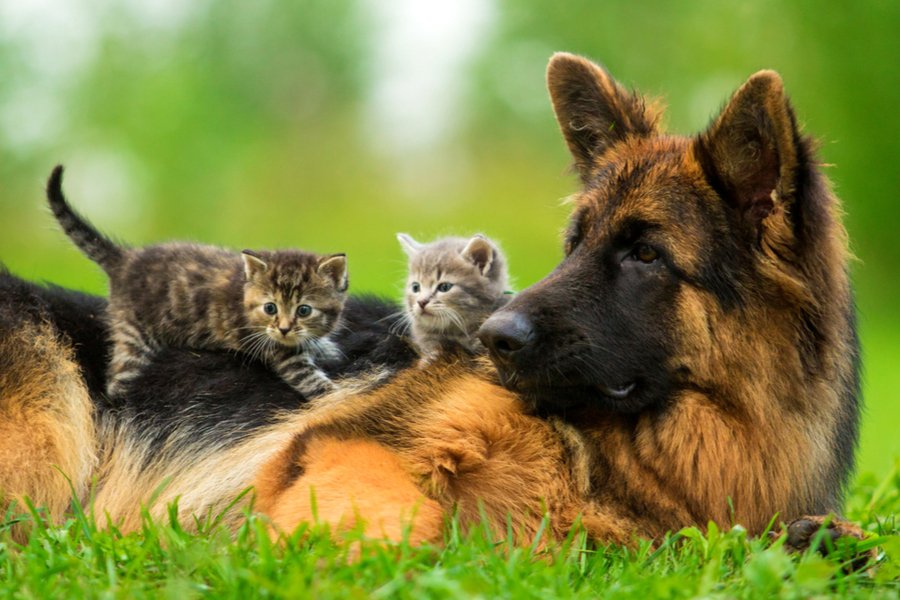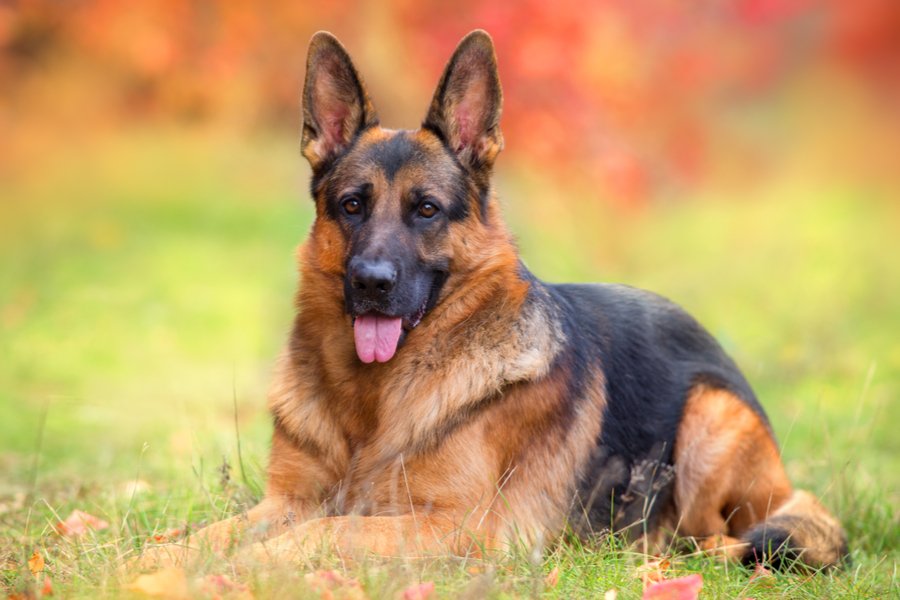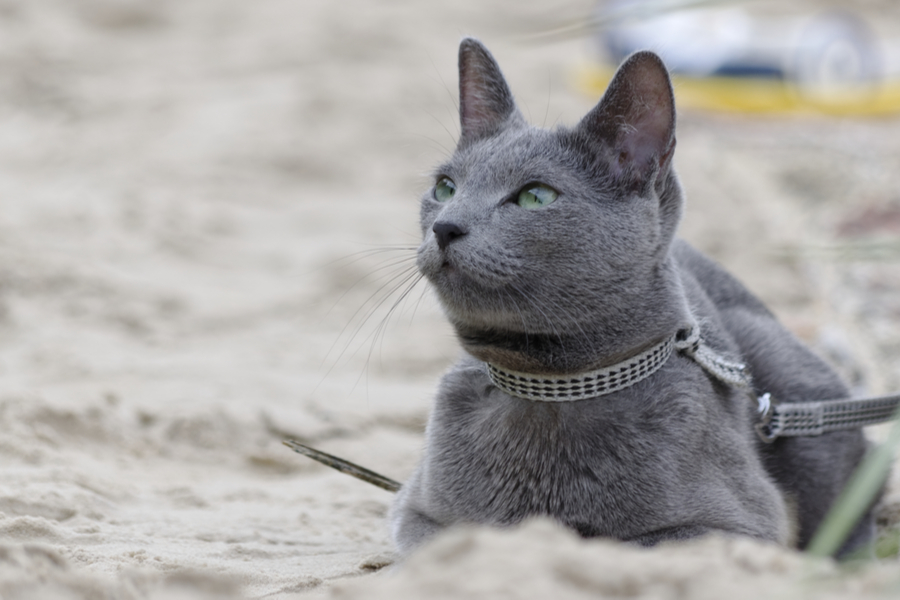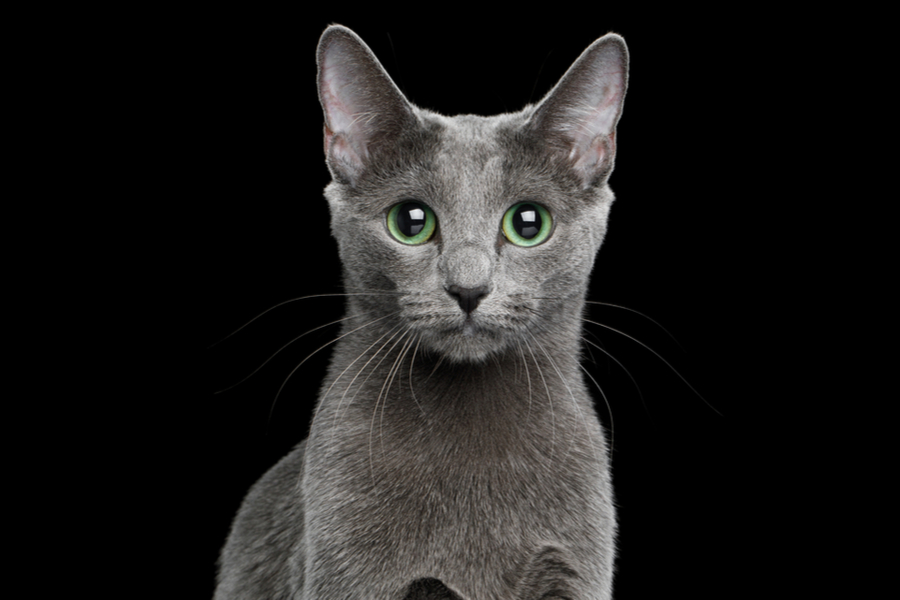Average sizes and life expectancy for this breed:
German Shepherds are one of America’s most popular and endeared dog breeds, and for good reason! These brilliant and talented working dogs have dedication and courage that are unrivalled. German Shepherds are also amazingly adaptable and versatile.
Bred to be working dogs, this breed excels at whatever it’s trained to do. As a result, they are regularly used in police and military services, search and rescue, drug detection, assistance work for the handicapped, herding, and competitive obedience. German Shepherds are even considered to be national heroes in the US after they were part of the search and rescue team that crawled through the ruins of the World Trade Center after the September 11th terrorist attacks. They also make devoted canine companions.
German Shepherds are sometimes referred to as Alsatians in Great Britain and other parts of Europe. They are amongst the top 10 most popular and most recognised dog breeds around the world. These dogs represent nearly all of the best canine traits. However, they are not for everyone. This dog breed was originally bred to herd flocks, so they have high energy levels. You must ensure you have the time to devote to their unique mental and physical needs. Otherwise, they can become destructive through frustration and boredom.
This dog breed can be aloof and standoffish with strangers because they are very territorial and fiercely loyal to their family members. This makes them great watchdogs. However, if you familiarize a German Shepherd with various situations and people from an early age, they can learn to adapt to new people and situations.
See available puppies




The German Shepherd (Deutsche Schäferhund) originates from the family of German herding dogs that varied in type from district to district until the late 19th century. In the ebbing years of the 1800s, Captain Max von Stephanitz, a German cavalry officer, made it his mission to develop the perfect German herder. Capt. Von Stephanitz and breeders who supported his idea crossed different strains from Germany's central and northern districts that resulted in the ancestors of the German Shepherds we know today.
In 1899, Capt. Von Stephanitz attended a dog show where he was shown a dog named Hektor Linksrhein. He was so impressed by the dog’s strength and intelligence that he purchased him immediately for 200 German Gold Marks and began the breeding process. Soon after, he also co-founded the world’s first club made for German Shepherds.
Over the next 35 years, he promoted and perfected the breed to become the perfect working dog for growing modern livestock management and herding. He also promoted the German Shepherd breed as the ideal K-9 worker. Today they are the preferred dog for police and military units the world over.
In the United Kingdom, German Shepherds are also known as Alsatians because fanciers of the dog breed wanted to remove negative connotations with Germany after World War I. It also could be due to the fact that they were first bred in the Alsace region of France which was part of Germany.
The UK Kennel Club first recognised the breed in 1919. In that first year, 54 dogs were registered. By 1926, the number had risen to over 8,000.
German Shepherds were introduced in the United States in 1906 and they immediately captured the public eye because of movie stars such as Strongheart and, later, Rin Tin Tin. German Shepherds were the military breed of choice during World War II. They were also the very first guide dogs.
In 1930, American fanciers of the breed invited Captain Max von Stephanitz to judge at the famous Morris and Essex Kennel Club Show. So many German Shepherd dogs were entered that he was forced to judge the contestants over two days and split the categories into males and females.
Today, this dog breed is one of the most popular and beloved dogs worldwide. A common phrase used amongst fanciers perfectly encompasses the unique and endearing traits of the breed:
‘There are wolves, there are dogs – and then there are German Shepherd Dogs.’


German Shepherds are large, well-proportioned dogs. The head is broad and tapers evenly to a sharp muzzle. These dogs have expressive, intelligent, almond-shaped eyes that are usually dark brown in colour, and moderately large ears that are wide at the base and stand erect.
German Shepherds have moderately long, well-muscled necks and the body is slightly longer than it is tall. They have slightly drawn-up abdomens and level backs that curve downwards towards the tail. Their bushy tails are held low in a curve when at rest. When moving or resting, these dogs portray an appearance of strength and dignity.
German Shepherds come in two standard coat varieties; a coarse medium-length, close-lying double coat and a long-haired version with a topcoat that often sits further away from the body, with a very thick undercoat. Both varieties have longer feathering around the hindlimbs.
The most common and easily-recognisable coat colour of this dog breed is black and tan. However, they can also come in all black and all grey, with lighter markings. The undercoat is usually fawn or grey, except in all black dogs.
German Shepherds are working dogs at heart. However, they generally get along with children and other pets if they are familiarized with them from an early age. Keep in mind, though, that with their guarding instincts, they may be suspicious of strangers at first.
The German Shepherd’s personality is reserved but rarely aggressive unless threatened. They are cautious dogs. This dog breed does not make friends very quickly, but once they do, they are incredibly devoted and faithful. If they are with their family, they are easy-going, laidback, friendly, and approachable, but German Shepherds can be strong and protective, making them exceptional watchdogs.
This bright and trainable dog breed thrives most when they have a job to do. German Shepherds can be trained to do virtually anything, from assisting the handicapped to search and rescue with an emergency team.
It’s worth noting that these dogs need company and adequate mental and physical stimulation. So, they do not like being left alone for long periods. Extended periods of loneliness and boredom can lead to unwanted behaviours such as excessive barking or chewing.
Like every dog breed, German Shepherds need early socialisation. Being exposed to many various people, experiences, sights, and sounds when they're young will help your pup to grow into a well-rounded and well-mannered canine companion.
German Shepherds are highly intelligent and active dogs. Because of this, they must be kept busy playing, learning, or working. Regular opportunities to run around, play games like frisbee, and training, will be much appreciated.


Because of their size and high energy levels, German Shepherds need plenty of physical and mental stimulation. These active dogs thrive in training sessions and enjoy playing fetch with a frisbee, ball, or stick. German Shepherds form very strong bonds with their owners and love to be involved in everyday family activities.
Early socialisation and training classes for puppies are essential. Continuing obedience training will ensure that your puppy knows what is expected of them. German Shepherds are bright canine companions and exceptional workers. Reward-based training should generate excellent results as long as you are consistent and patient. Be prepared to run 10-15 minute training sessions every day from the time your German Shepherd is a young puppy. If you do this, you will be rewarded with a devoted, obedient canine companion that will lavish you with affection for years to come.
German Shepherds have a medium-length, dense double coat, with a harsh and close-lying outer coat and a soft, fluffy undercoat. This dog breed should be brushed 3-4 times a week to remove any loose hairs and to keep the coat in good condition. Also, bear in mind that they shed their entire undercoat twice a year so you may need to brush more often during these times. Due to the amount of fur these dogs shed, they are not suitable for people with allergies.
German Shepherds only need occasional baths. It is also important to trim their nails once a month or so, especially if they are not being worn down naturally. Excessively long nails can cause pain and movement issues.
German Shepherds enjoy chewing. This habit keeps their teeth clean. Give them strong, safe dental bones or chew toys regularly to help fight tartar buildup, particularly on the back molars. You should also brush their teeth at least 2-3 times a week with a vet-approved, soft toothbrush and toothpaste.
Like all dog breeds, German Shepherds need to have their ears regularly checked and cleaned to prevent ear infections. You can do this by wiping the outer portion of the ears with a cloth or cotton wool ball and a PH-balanced ear cleaner solution.
During grooming, it is also a good idea to check the body for any signs of infection or illness, such as redness, inflammation, cuts, abnormal lumps, and unusual discharge. Picking up on these signs early will help you to keep your dog as healthy as possible. If you notice any issues, it’s best to get your dog booked in for a checkup with your vet.


German Shepherds are known to suffer from a number of health issues, especially joint problems. Always purchase a puppy from a reputable breeder who will be able to perform DNA tests to determine if any abnormalities or underlying health conditions are present.
Some of the health issues seen in German Shepherds include:
If German Shepherds are well-trained and have had plenty of exposure to kids, especially as a puppy, they make great companions for children. In fact, some owners say they are a mixture between a babysitter and a cop. They are a perfect match as kids generally have loads of energy and so do German Shepherds! This endless energy combined with their intelligence means these dogs can be a joy to be around because you can teach them to play games and do tricks, which they tend to learn very quickly.
Saying that, German Shepherds are large, strong dogs that can easily knock over and injure a small child. So, all interactions should be supervised. German Shepherds will be a bit more reserved with children they are unfamiliar with.
German Shepherds can also live harmoniously with other dogs and pets if they are familiarized early in their lives. Introducing an adult German Shepherd to a household with other pets can be challenging if they are not used to other animals. So, exercise caution and introduce them slowly over a few weeks. If you are having trouble, you can also consider hiring a professional trainer.


We can connect you with Breeders that are specialized in this particular breed.
See available puppies
Belgium
Size : Large
Coat : Short
Registration : KC, AKC, FCI
Exercise : 2 hour
Training : Easy
Grooming : Once a Week


Need some advice?
Whether you're a first time pet owner, an experienced pet owner, a new or long-time breeder, or just curious about pets, we've got you covered!

January 17, 2024
What Is The Personality Of Russian Blue Cats?
Russian Blue cats are most known for their distinctive shimmery blue-silver coat and piercing green eyes. However, this breed’s calm and gentle temperament is what makes them shine the most in the feline world.

January 17, 2024
10 Facts About Russian Blue Cat Breed
Russian Blues are one of the most aesthetically stunning cat breeds, with a gorgeous plush silvery coat and vibrant green eyes. However, it’s not only their appearance that is beautiful; their nature is too.

January 17, 2024
How To Choose The Right Cat Breed for You
Cats can make the most fantastic animal companions; they are adorable, friendly, and loving. However, not all felines are created equal. There are many different breeds, of which each has its unique personality traits.
Need some help?
Contact us to speak to our friendly advisor, who will gladly help you find your dream pet!



We are registered in England and Wales under registration number 12568840,
and our registered office is at 58-60 Kensington Church Street, W8 4DB London, England.
© 2023 The Pedigree Paws